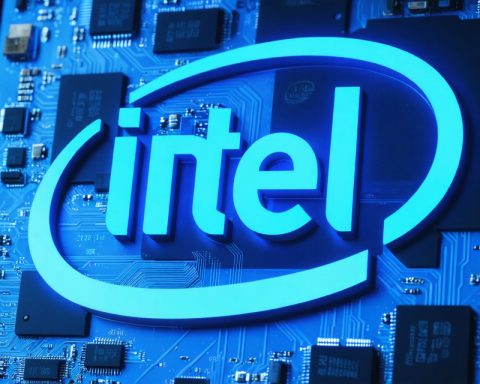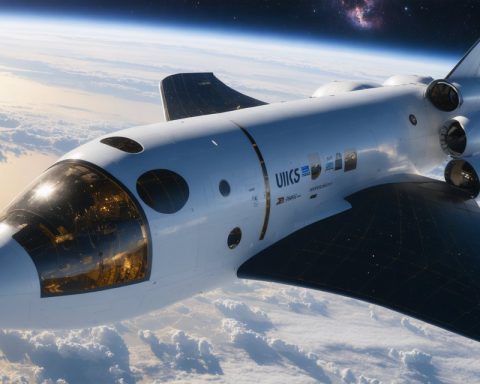- The Zuchongzhi-3 processor from USTC boasts 105 qubits and 182 couplers, outperforming Google’s Sycamore in quantum computing.
- It achieves quantum random circuit sampling tasks 1015 times faster than advanced supercomputers, moving closer to quantum supremacy.
- Developed by Jian-Wei Pan and team, this breakthrough highlights collaboration and innovation, featured in Physical Review Letters.
- The Zuchongzhi-3 builds on past achievements like Jiuzhang and Zuchongzhi-2, demonstrating superior fidelity and problem-solving potential.
- Beyond current capabilities, it promises advances in quantum error correction, quantum chemistry, and entanglement.
- This represents a quantum leap into a future of limitless possibilities, encouraging continual exploration and innovation.
In the shimmering realm of the almost fantastical, where the metaphysical meets the mathematical, a seismic shift has rattled the quantum landscape. The newly unveiled Zuchongzhi-3 processor, a majestic creation from the University of Science and Technology of China (USTC), has taken the world by storm with its stunning array of 105 qubits and 182 couplers. This quantum behemoth performs calculations at speeds that leave even the most advanced classical supercomputers in the dust, surpassing Google’s pioneering achievements in quantum computing.
The heart-stopping pace of Zuchongzhi-3, performing a quantum random circuit sampling task at speeds 1015 times faster than the finest supercomputers, conjures visions of a sci-fi future now within grasp. With each ticking second, the machine operates a million times faster than the quantum titans of yore, pushing humankind closer to the long-sought-after horizon of quantum supremacy.
Framed by the genius minds of Jian-Wei Pan, Xiaobo Zhu, Cheng-Zhi Peng, and colleagues, this breakthrough was not merely a technological triumph but a narrative of collaboration and innovation. Their work has been immortalized as the cover story in the revered pages of Physical Review Letters, cementing its place in the annals of scientific history.
The ageless allure of quantum computing lies in its tantalizing promise to transcend the limitations of classical computing. Google’s Sycamore processor, with its 53 qubits, once dazzled the tech cosmos by completing tasks once thought impossible for classical computers. Yet, the recent rise of USTC’s Zuchongzhi-3, accompanied by tools and techniques unimaginable a decade ago, sets the bar even higher.
This pioneering advance arises within a dynamic backdrop where benchmarks are both a destination and a launching pad. In 2023, USTC refined classical algorithms capable of performing tasks previously claimed under quantum dominance, shaking the foundations of what many believed about quantum supremacy.
Building upon triumphs with the Jiuzhang photonic quantum processor and the sublimely effective Zuchongzhi-2, the Zuchongzhi-3 emerges, dazzling in its superiority. With its exquisite architecture and refined fidelity across gates and readouts, it charts pathways to solving problems of dizzying complexity, previously shackled by the constraints of time and processing power.
The machine’s triumphs don’t rest on laurels—it’s a beacon lighting the way forward. Its capabilities stretch far beyond its processors; it carries the potential to revolutionize quantum error correction and to transform fields like quantum chemistry and quantum entanglement.
In this quantum odyssey, the Zuchongzhi-3 isn’t just an end—it is an invitation to dream even bigger. The persistent ambition of its creators keeps the heart of science alive: a journey aiming ever onward, always reaching further into the unknown.
This quantum leap signifies more than tech’s latest marvel. It embodies an essential truth: as our tools transcend the horizons of imagination, the future belongs to those who embrace its limitless possibilities. With Zuchongzhi-3, a saga of quantum triumph unfolds—one that challenges us to imagine, explore, and redefine what is possible.
Breakthrough in Quantum Computing: The Zuchongzhi-3 Processor Revolutionizing the Future
Introduction to Quantum Computing
Quantum computing stands at the frontier of technological advancement, promising to revolutionize industries ranging from cryptography to artificial intelligence. The recent unveiling of the Zuchongzhi-3 processor by the University of Science and Technology of China (USTC) marks a significant leap forward, surpassing previous milestones set by Google’s Sycamore processor.
Key Features of Zuchongzhi-3 Processor
– Qubit Count and Performance: The Zuchongzhi-3 processor boasts an impressive 105 qubits and 182 couplers. This configuration allows it to perform a quantum random circuit sampling task at speeds 1015 times faster than traditional supercomputers.
– Technological Advancement: The processor integrates innovative techniques in quantum error correction and enhanced readout fidelities, paving the way for solving complex problems previously deemed unsolvable by classical computers.
Quantum Computing vs. Classical Computing
– Speed and Efficiency: Quantum computers like Zuchongzhi-3 can potentially solve complex problems much faster and more efficiently than classical supercomputers. This is due to their ability to perform parallel computations by leveraging phenomena such as superposition and entanglement.
– Potential Applications: Quantum computing can transform fields such as drug discovery, materials science, and financial modeling by performing calculations in seconds that would take classical computers millennia.
Challenges and Limitations
– Scalability Issues: One of the main challenges faced by quantum computing is scalability. While Zuchongzhi-3’s 105 qubits are groundbreaking, further development is necessary to achieve fault-tolerant quantum computing.
– Error Rates: Despite advancements in quantum error correction, maintaining low error rates remains a critical challenge that must be addressed as the technology advances.
Real-World Use Cases
– Cryptography: Quantum computers can break traditional cryptographic schemes, leading to the development of quantum-resistant algorithms to safeguard sensitive information.
– Optimization Problems: Industries like logistics and supply chain management can utilize quantum algorithms to optimize complex processes, saving time and resources.
Future Predictions and Trends
– Continued Growth: The quantum computing market is expected to grow rapidly, with increasing investments from tech giants like IBM, Google, and startups working toward commercializing quantum computing solutions.
– Collaboration Opportunities: International collaboration in quantum research is crucial for technological advancements and addressing global challenges, such as climate change and cybersecurity.
Actionable Recommendations
– Stay Informed: Keep abreast of developments in quantum computing by following reputable sources like Nature and Scientific American.
– Invest in Education: As quantum computing becomes more integrated into various industries, gaining knowledge in quantum mechanics and related fields can provide a competitive edge.
– Explore Partnerships: Businesses should consider partnerships with quantum computing companies to explore potential applications and future-proof their operations.
Conclusion
The Zuchongzhi-3 processor is a paradigm-shifting advancement in quantum computing, challenging the limits of what was once thought possible. Embracing this technology and its potential can empower future innovations and open doors to solving global challenges with unprecedented efficiency and speed.
For more insights into the fascinating world of quantum computing, visit University of Science and Technology of China.











